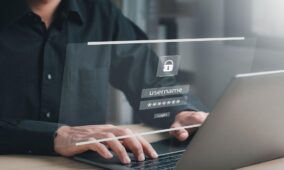With remote-working in full swing now, security has yet to be fully tightened due to IT constraints. What can we do?
Even with lockdowns relaxed in many countries, many of us are still working from home at least some of the time. To stay productive, we must work remotely with different devices ranging from desktops and laptops to smartphones and tablets.
All these devices access different cloud services to share information, but without proper security and privacy diligence, this can increase risks and compromise information security.
Organizations therefore need to find new ways to ensure the security of endpoint devices and the data they contain. It is important to help employees understand the obstacles and risks they face, and find solutions that adapt to their needs.
What can companies and employees do to protect themselves? CybersecAsia took the opportunity to glean some tips from Rakesh Mandal who is the senior director and general manager of Client Solutions (South Asia & Asia Emerging) at Dell Technologies. His advice follows:
- Train employees on security topics: It is important that all employees understand why data safety is critical at all levels, and how they play a vital role in keeping data safe in and out of the company. Training must consider common and unexpected scenarios in which data can be compromised, and show practical safety practises.
- Find solutions that provide high levels of endpoint security while allowing end users to work freely: In order to be productive, organizations need to protect endpoints and the data they contain in a simple way that allows employees to do their jobs without complications that could be a barrier.
- Keep the security solutions that are available up to date and execute all patches on time: While many organizations have limited budgets and do not have security specialists on staff, every organization needs to prioritize the maintenance of its software, as well as patch execution to reduce areas of vulnerability. Organizations can consider using cloud-based tools that will allow IT teams to remotely update policies, patches and app versions across the network.
- Have a strong backup plan: Organizations need a plan to cope with data recovery. Nowadays, information is the most valuable asset in any company. Looking after this information can be the difference between companies that recover quickly from a disaster and those that do not. With new developments being made in the area of cloud-based data protection solutions, organizations can easily recover their data while taking full advantage of the data management tools that these solutions provide.
- Integrate robust security solutions to protect important data and prevent threats: Leverage advanced prevention to help stop threats. Encrypt data so that the data cannot be used even when someone accesses the data; and use backup and recovery solutions to move forward if a data leak occurs.
According to Mandal, modern work needs a modern security approach to protect the end user’s workplace, data, devices and access. “Organizations that look for a comprehensive approach to endpoint threat management, and consider measures to help safeguard and remediate identified threats across the network and cloud, are the ones that will be able to successfully protect their employees as well as company data.”

















